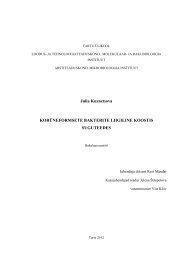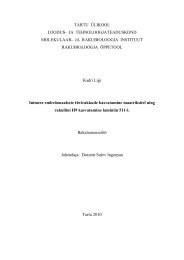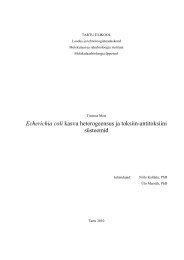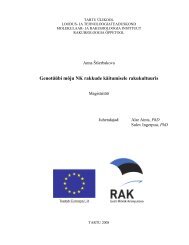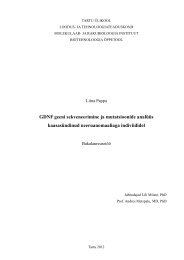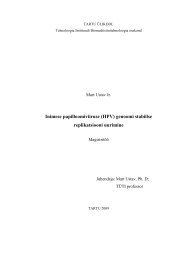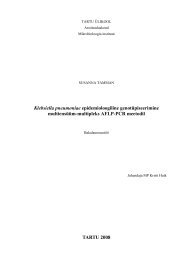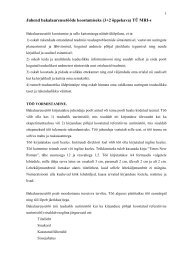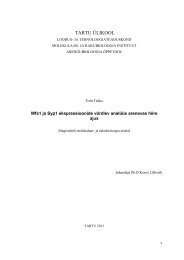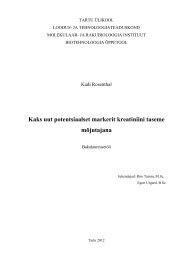Ülegenoomne assotsiatsiooniuuring kubemesonga geneetiliste ...
Ülegenoomne assotsiatsiooniuuring kubemesonga geneetiliste ...
Ülegenoomne assotsiatsiooniuuring kubemesonga geneetiliste ...
You also want an ePaper? Increase the reach of your titles
YUMPU automatically turns print PDFs into web optimized ePapers that Google loves.
9 Summary<br />
Repair of inguinal hernia is one of the most common operations in general surgery. Thus<br />
there are many methods of inguinal hernia repair, etiology of hernia formation still poorly<br />
understood. The cause of inguinal hernia is multifactorial and previous studies provide<br />
evidence for a genetic component of the disease. The aim of the present study has been<br />
identifying genetic loci that can be associated with inguinal hernia in Estonian population.<br />
In the present study 8 911 794 markers for 3851 were analysed for individuals from Estonia<br />
population. The logistic regression method was used to analyse inguinal hernia data and<br />
covariates sex and age were used. Markers were tested using an additive model.<br />
In this study genome-wide statistical significant associations were not identified. Our results<br />
suggest, that there are no genes with large effects to hernia but rather many genes all having<br />
small relative risks. Additionally, the phenotype of disease is complex and the selection of<br />
cases and controls can be suboptimal.<br />
The associations with P-value less than 10 -5 revealed 35 loci containing 5 loci, which<br />
potentially are novel candidate loci for inguinal hernia. These loci were near or within<br />
HTRA3, NRG1, MFAP5, PDZRN3 and TBC1D19 gene regions. All this genes are<br />
associated with collagen or extracellular matrix, which have been mentioned in previous<br />
studies of inguinal hernia. In additional analysis, men were analysed separately. Both<br />
analysis – men separately and all individuals, revealed the same locus, NRG1. Interestingly,<br />
this gene is associated with collagen diassamble.<br />
Even through present genome-wide association study didn’t identify statistically significant<br />
results, several interesting novel loci were found for inguinal hernia. To validate the results,<br />
a replication study must be considered using independent cohort data.<br />
38



